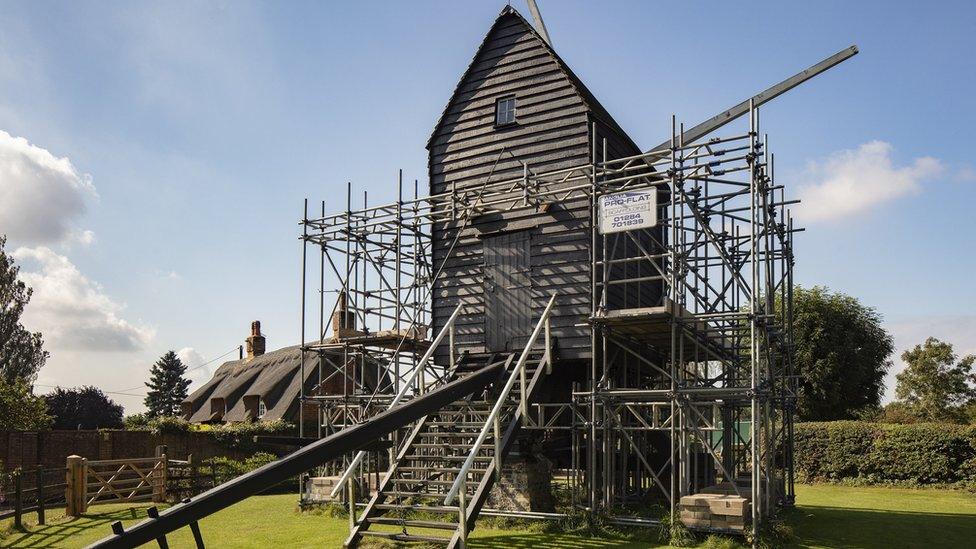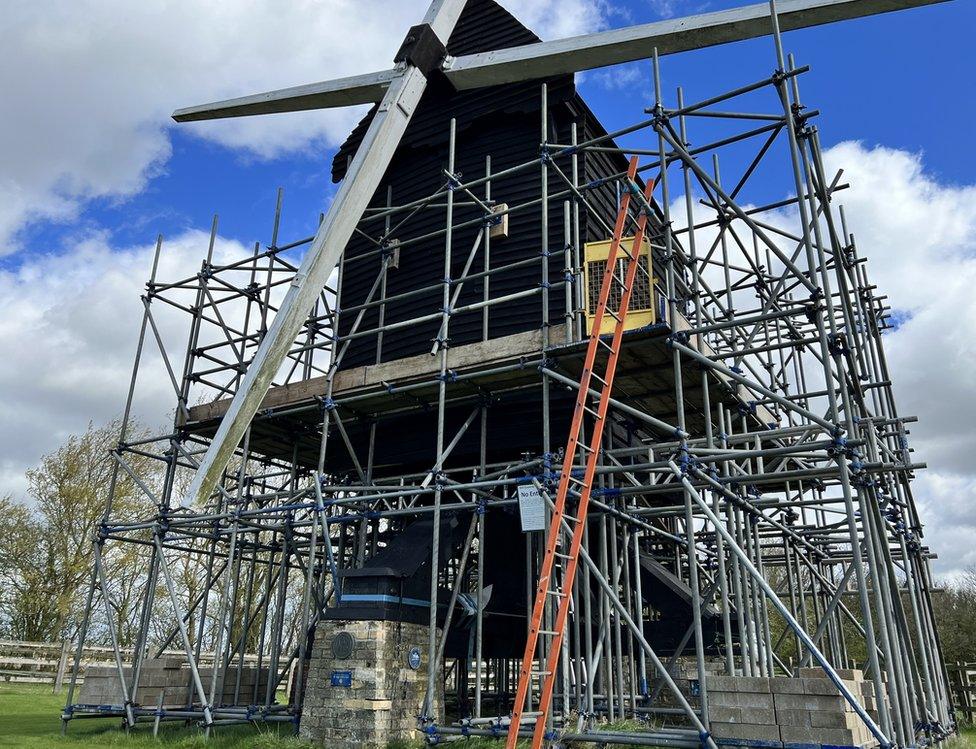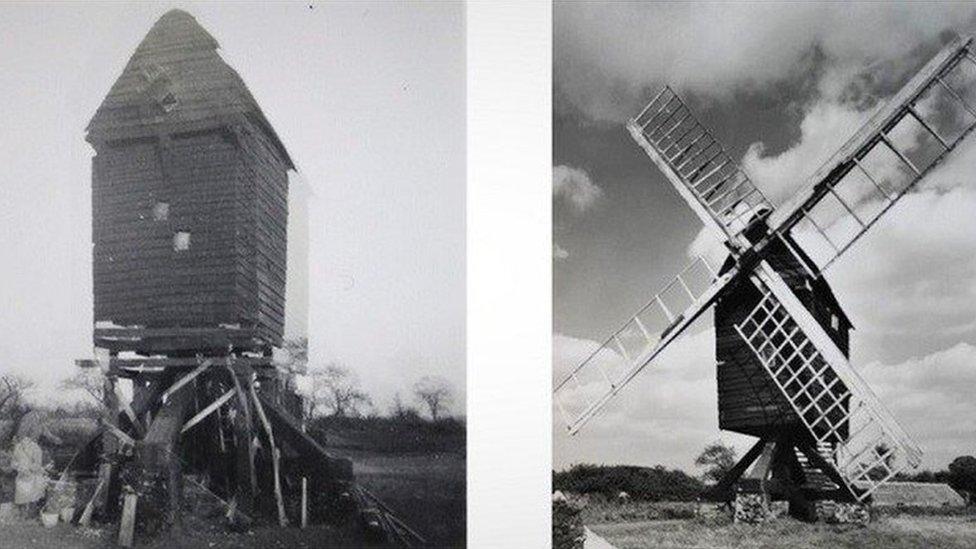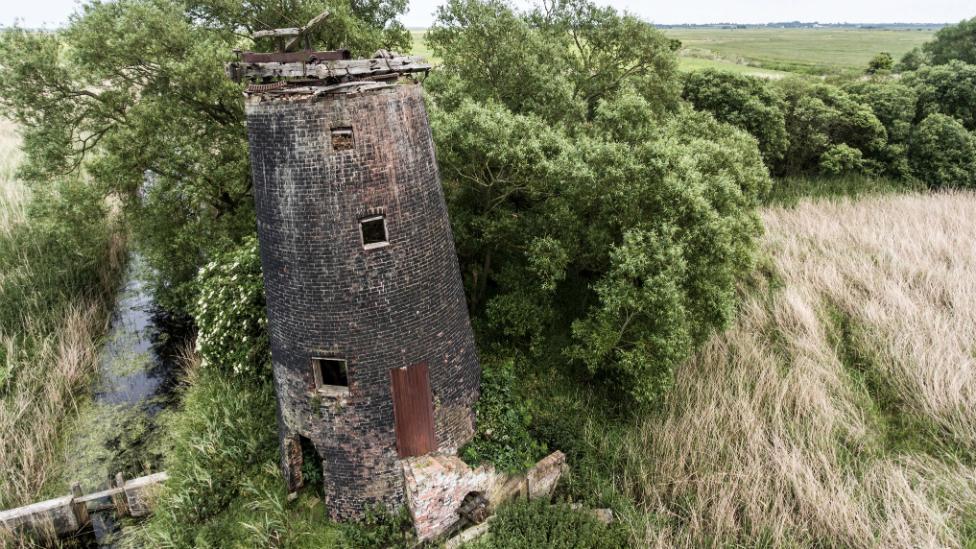Norman Foster backs campaign to save Bourn Mill
- Published

The central support beams of Bourn Mill are at risk of collapse and will cost more than £150,000 to repair
A campaign to save one of England's oldest windmills has won the backing of architect Norman Foster.
Bourn Mill in Cambridgeshire was added to Historic England's at Risk Register, external because of rotten support beams.
Lord Foster, whose designs include London's Gherkin building, drew the Tudor-era mill as a student and praised "the sheer beauty" of its design.
Campaigners say they are just £10,000 short of the funds they need to start the restoration work in the spring.

Norman Foster drew a cross-section of the mill as part of his architectural studies
Lord Foster said the mill had "particular personal significance to me as an architect".
"As a young student at Manchester University, I was drawn to Bourn Mill to create a set of measured drawings of the building - a requirement of my architectural studies," he said.
"My choice was not only because of my fascination with the ingenuity of a trestle post mill construction - with the entire weight of the structure supported on a central post and trestle - but also the sheer beauty of the overall design, particularly in section."
The architect said his mill drawings "remain one of the most viewed items" in the Norman Foster Foundation archive, external.

Norman Foster has designed some of the most famous buildings in the world, including London's Millennium Bridge and the Hearst Tower in New York
The mill was found to be at risk of collapse in 2020, when extensive rot was discovered in its beams.
James Littlewood, chief executive of Cambridge Past Present and Future, external which owns the mill, said: "When we first discovered a small area of rot, we could not have imagined that the whole structure of the mill was at risk of collapsing and that a significant and expensive project would be needed to save the windmill."

The mill was added to the Risk Register because of rotten support beams
The National Lottery Heritage Fund, external has awarded £148,456 of funding, Historic England gave a grant of £54,000 and more than £20,000 has been donated by the public so far.
Recent Historic England research revealed the mill's main post was from a tree felled between 1513 and 1549, making this the earliest main post of a mill yet dated.

The post mill was last restored to working order in 1932

Find BBC News: East of England on Facebook, external, Instagram, external and Twitter, external. If you have a story suggestion email eastofenglandnews@bbc.co.uk, external
Related topics
- Published4 November 2021

- Published13 October 2020

- Published10 May 2020

- Published25 October 2017
